
Full moon at Shimogamo in 2012
Moon-viewing is an aesthetic custom in Japan with a spiritual component. For Buddhism, the full moon is a symbol of enlightenment, and the phases of the moon indicative of the ever-changing nature of life. Nothing is constant except change itself. For Shinto the moon is a symbol of the wonder, beauty and awe of natural phenomenon, compelling realisation of mankind’s place within Daishizen (Greater Nature), a true creature of the environment.
Japanese culture reflects a long obsession with the moon and its effect on the poetic sensibility – the poet Saigyo is a marvellous example. Yet the Shinto moon deity Tsukuyomi does not figure very much in the mythology, nor is worship of him widespread – Amaterasu fell out with him over his killing of the food goddess (perhaps a reference to clan clashes in ancient times). Yet he was not only one of the three primal deities to emerge from Izanagi’s first ever misogi, but he was brother and husband to Amaterasu herself. One might expect him to have a high profile in Shinto terms. After all, the moon lights up the darkness in mysterious and entrancing manner, with a spiritual quality that lies beyond the powerhouse of the sun.

A white rabbit brought by one of the crowd at the Shimogamo Full Moon Festival in 2012
Green Shinto has written previously of the autumnal full moon ceremony at Shimogamo Jinja, a wonderful cultural event that brings together people to celebrate the beauty of the occasion – a prime example of the importance laid on aesthetics (rather than morals) in the religion.
On this occasion, I would like to hand the content over to our Green Shinto friend, Megan Manson, who has written a piece on moon-gazing from a neo-pagan perspective. (Her writing can be investigated further on the following blog: http://www.patheos.com/blogs/pagantama/author/mmanson/)
Interestingly, she raises the featuring of rabbits/hares in such stories. Cocks, bulls and horses are associated with the sun worldwide, but hares and rabbits serve the moon (lunacy connected with the moon seems to have affected the image of the Mad March Hare).
It was noticeable on my travels this summer through pagan parts of England how often hares were featured, for the animal held some kind of fascination for people of the past. It was thought that they could shape-shift or disappear, rather like foxes in Japanese folklore. They were liminal creatures, and their shape-shifting relates them to the constant changing of the moon. As part of the shape-shifting they were able to turn from male to female and thereby self-impregnate, becoming a symbol of fertility. Similarly the autumn moon speaks of plenitude, fullness and harvest blessings.
Can it be just coincidence that in this ninth month of the year, the plump roundness of the autumn moon is celebrated in Japan as being the most beautiful? Perhaps the allure is abetted by the magical promise of creating new life. Look hard enough, and within its pregnant bulge can be seen dark shadows outlining the shape of a rabbit.
************
Moon Gazing At Tsukimi: Japan’s Autumn Festival
It is a beautiful autumn evening. As the cool breeze sweeps over rivers and mountains, a woman creates an altar outdoors in honour of the Full Moon. Offerings of autumn’s bounty – chestnuts, pumpkin, wine, potatoes, and home-made sweets – are carefully stacked upon a raised platform, and beside it is placed a vase of autumn greenery. The woman gazes at the Moon, drinking in its beauty and its mysterious power, and she may even be inspired to write poetry about the scene. Once her contemplation of the Moon is over, she and her family eat the offerings together, thankful for the gifts that Nature provides.
This may sound like a typical Full Moon ritual performed by Neopagans all over the world. But this isn’t a Neopagan ritual. This is a ritual for Tsukimi – Japan’s annual Moon Gazing Festival.
Like many of Japan’s festivals, Tsukimi (usually referred to with an honorific “o”, O–tsukimi, in Japan) has its origins in China, where it is known as Zhōngqiū Jié – the Mid-Autumn Festival. It may date as far back as the Shang Dynasty (16th to 10th century BCE) and was held in order to commemorate a successful harvest. It was a time to give thanks to the spirits of nature for their gifts. Today it is celebrated in countries throughout East Asia, including Korea, Vietnam and, of course, Japan, on the 15th day of 8th month according to the Chinese calendar. This usually translates as the September 15th of the Gregorian calendar (this year, the Full Moon will fall on the 16th, so I will probably celebrate Tsukimi then).
Chang’e the Chinese Moon goddess. Note the rabbit. 吴少云, Wu Shaoyun, CC Wikimedia Commons
In addition to celebrating the the autumn harvest, the Mid-Autumn Festival is linked to Moon worship. In China, the Moon is revered as the goddess Chang’e. At the Mid-Autumn Festival, offerings are made at altars to Chang’e facing the Moon, in the hope that she will bless her worshippers with beauty. In Japan, the kami of the Moon, Tsukuyomi-no-Mikoto, is usually thought to be male. However, his name or image do not usually feature in Tsukimi imagery. Perhaps this is because Tsukuyomi is sometimes portrayed as rather sinister; according to the Kojiki (Japan’s ancient record of myths), Tsukuyomi angered the kami of the sun, Amaterasu Ōmikami, by killing the kami of food. Or perhaps it is because Tsukimi is of clear Chinese origin, so it is not as strongly associated with the kami of Japanese origin.
The image you are likely to see at Tsukimi, both in China and Japan, is the rabbit. Rabbits and hares have lunar associations in many countries and East Asia is no exception. Throughout East Asia, people interpret the markings on the full Moon to be a rabbit (whereas Westerners often see them as a face). The Chinese say that the rabbit is a companion of Chang’e, while according to a Buddhist legend known throughout Asia, the rabbit was put on the Moon to reward him after performing a deed of self-sacrifice. According to Japanese tradition, the rabbit in the Moon is making mochi (sticky rice cakes) with a hammer and mortar; you’ll therefore see lots of depictions of rabbits eating or making mochi at Tsukimi.
**************
(From Kyoto Visitors Guide)
Sept. 15: Shimogamo Shrine
During this moon viewing music festival, traditional dance and music, and a koto harp music will be performed from 17:30; The performers and players wear gorgeous Heian period costumes. Tea ceremony: 1,000 yen; Tel: 075-781-0010.
Sept. 15-17
Osawa Pond in Daikaku-ji Temple
Since ancient times, people have enjoyed full moon viewing from boats on Osawa Pond. Tea ceremony is held on the boats and participants can enjoy an elegant evening in a spectacular setting. A koto harp concert will also performed twice a day. Boat ride: 1,000 yen, tea: 800 yen (Admission to the temple: 500 yen); 17:00-20:30; Tel: 075-871-0071.
Sept. 15
Kamigamo Shrine
After a special dance performance, special sweet dumplings and sake will be offered to the first 300 people from 18:00. Admission free.
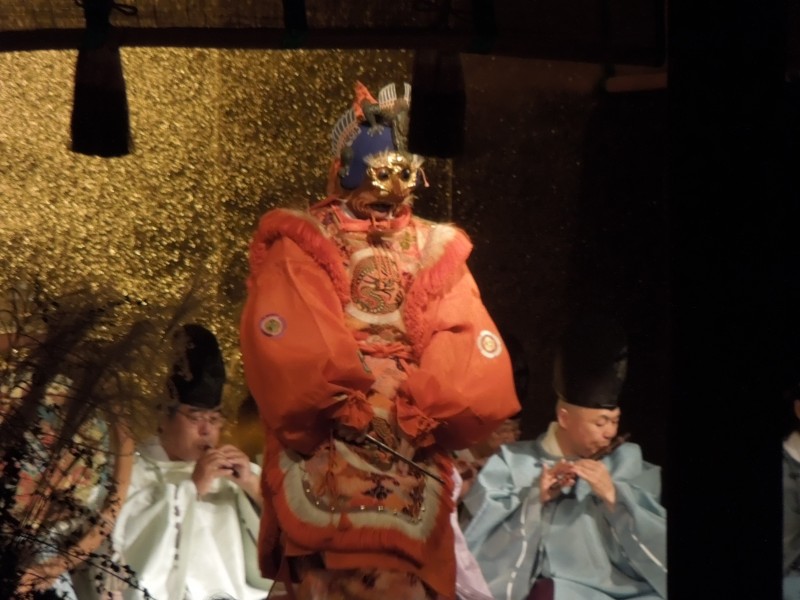
Tsukimi performance at Shimogamo in 2012
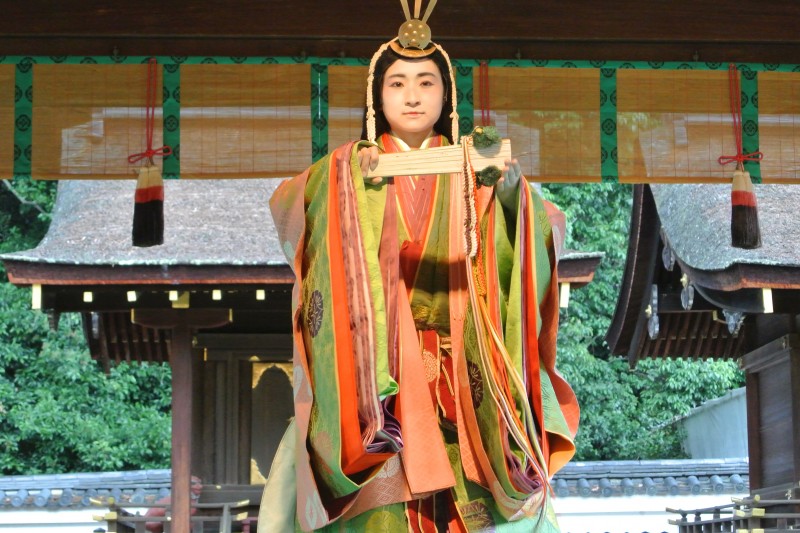
Display of the 12 layered ceremonial dress of Heian times (junihitoe)
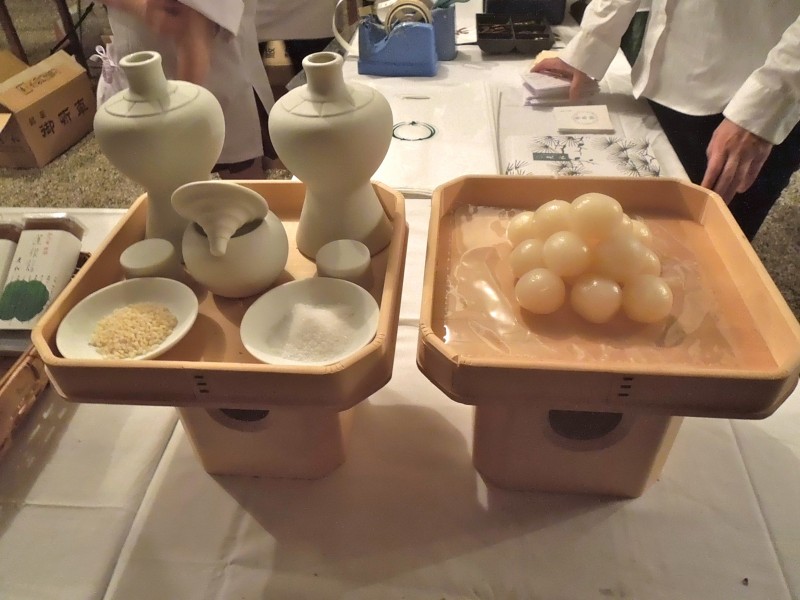
The set of special dumplings made for the occasion (tsukimi dango)
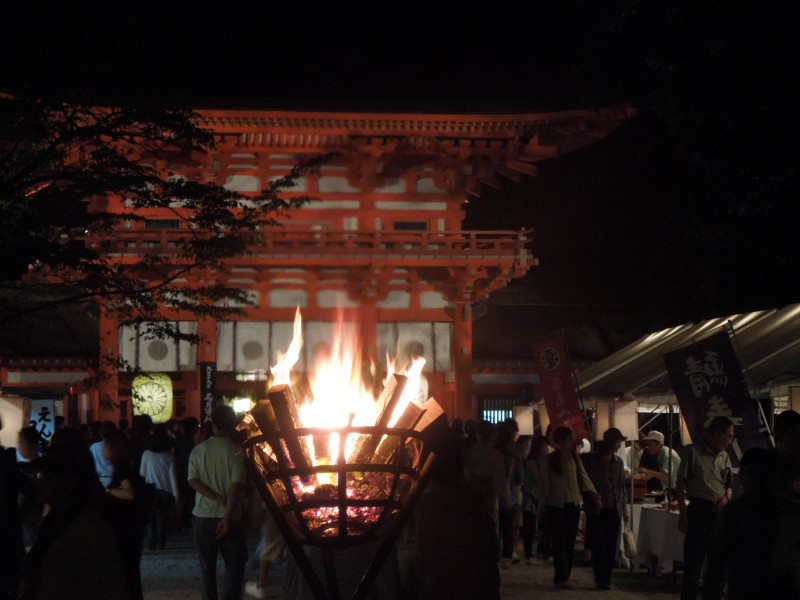
The stalls that line the approach come to life as darkness descends
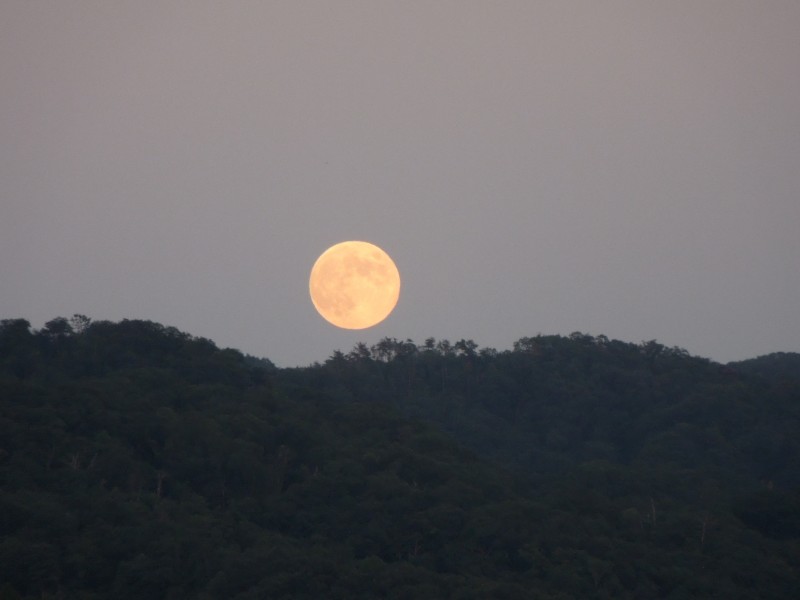
Rising moon: the full moon’s first appearance over Kyoto’s Eastern Hills, like an inflated hot air balloon

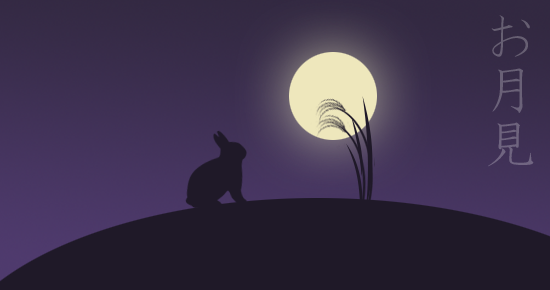
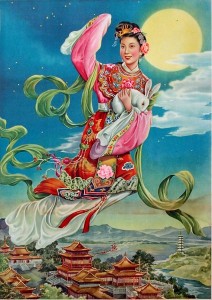
Leave a Reply